Poco F4 GT review: a powerful phone for gaming
The Poco F4 GT has play-enhancing features that go beyond raw power
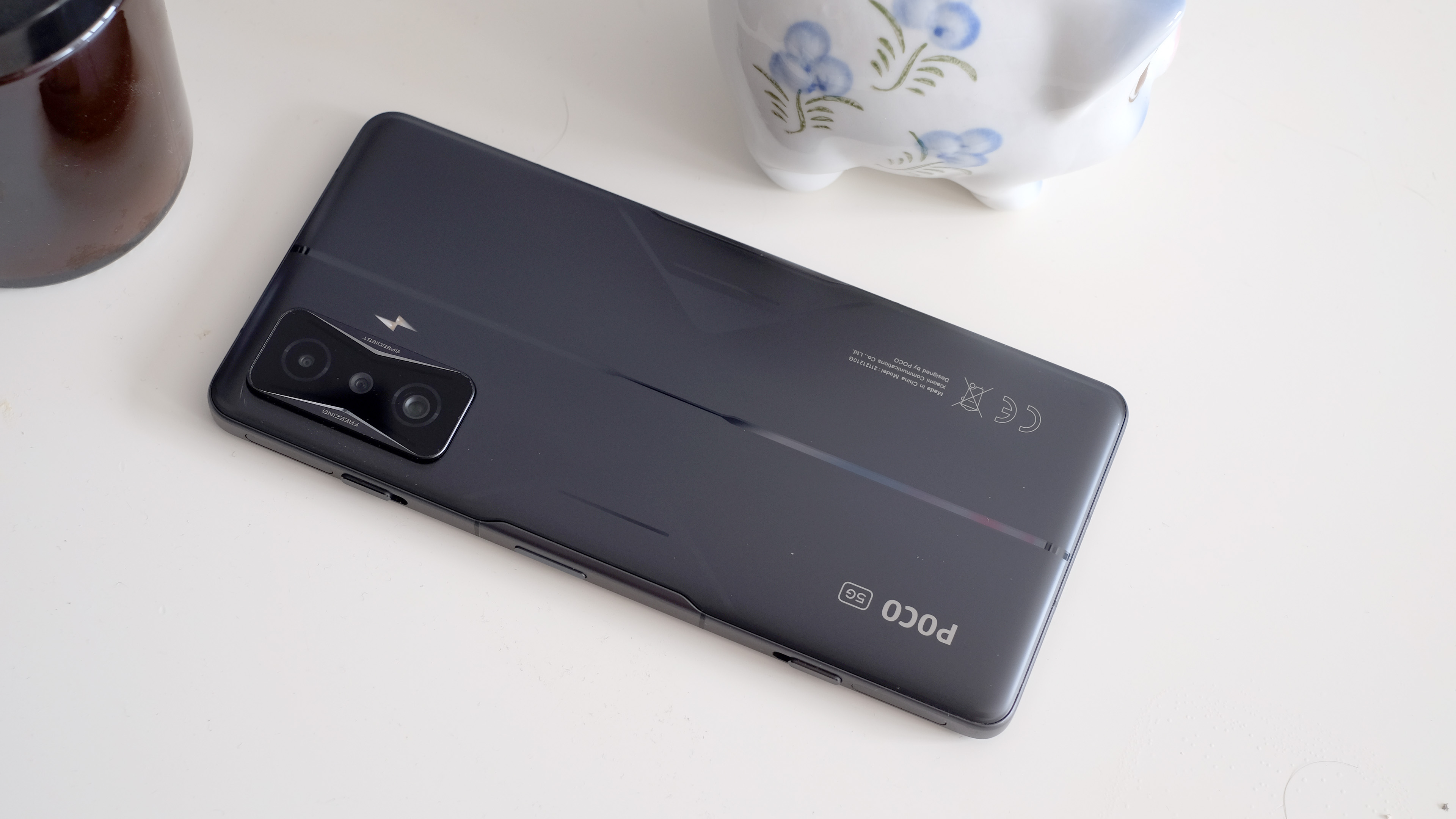
A powerful gaming phone where the play-enhancing features go beyond raw power and an aggressive design, but relatively short battery life and a tendency to run hot reduce its appeal significantly.
-
+
High-quality glass and metal shell
-
+
Unusual magnetic pop-up trigger buttons
-
+
High peak performance
-
+
Good 4-speaker audio system
-
-
Gets hot even when not playing games
-
-
Suffers from very significant thermal throttling
-
-
Battery life is not particularly good
-
-
Cameras aren’t a match for non gaming-focused phones near the price
Why you can trust T3

After a super-powered gaming phone? Check out this Poco F4 GT review. You could say that about a lot of Poco phones, but this one goes several steps further.
It has pop-out physical controls for a gamepad-like feel and the Snapdragon 8 Gen 1 processor that, until recently, was an Android chart-topper. The Poco F4 GT even looks like one of the best gaming phones, with a case design inspired by gaming laptops.
A few issues spit some crud into what is otherwise a bit of a beast that packs a lot in for £699. First, it gets hot a lot. This doesn’t feel great as you play, and the internal heat also causes significant thermal throttling that makes you wonder if the Snapdragon 8 Get 1 is really as good a gaming SoC as benchmarks suggest.
The pop-up controls, while neat and cleverly designed, aren’t that comfortable to use. And the camera predictably doesn’t come anywhere near something like the Pixel 6 Pro, which is actually cheaper in its entry-level version. Relatively short battery life may become a headache for those who expect it to be the workhorse it comes across on the outside.
Poco F4 GT review: price and availability
Available to buy right now, the Poco F4 GT will set you back $565 in the US and £700 in the UK. Take a look at where you can buy one through the widgets on this page.
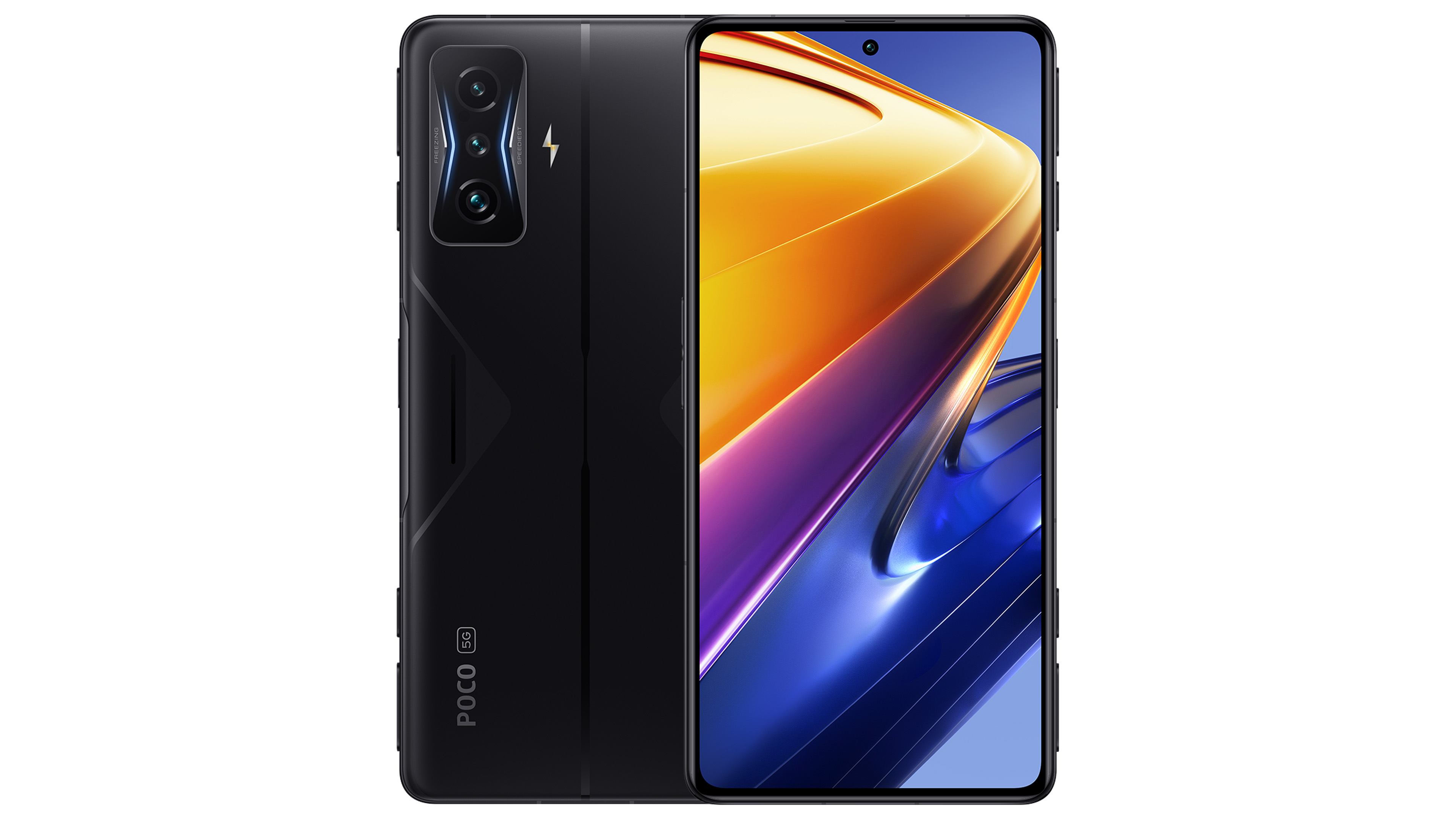
Poco F4 GT review: design and display

A lot of my favourite Poco phones put most high-end built elements in the ejector seat, in favour of delivering the best possible performance for your cash. Xiaomi, the company behind the Poco series, hasn’t had to do that with the Poco F4 GT.
It’s a more expensive kind of phone, while still costing less than a true gaming show-off like the Asus RoG Phone 6. The front and back are Gorilla Glass, the sides are aluminium. The only plastic is found in a thin strip that sits between the display glass and metal borders.
The Poco F4 GT feels like a tank as a result, but its “look” will not suit all tastes. Its back glass has a lovely matt glass finish, but slightly shinier segments, patterns, in the back make it look unmistakably like a “gaming” phone. It’s the typical aggressive style you see in a lot of gaming laptops, an aesthetic that spreads to the camera housing and its lightning-shaped LED flash.
Gaming cred goes well beyond affectation in the Polo F4 GT, though. It has unusual pop-up magnetic buttons on its side. A slider next to each makes them slip back, flush with the rest of the side-frame.
This avoids you accidentally pressing them while the Poco F4 GT is in your pocket. While you might accused them of being over-engineered, the ability to easily disable them is essential because they are not just for gaming. Double-presses and long presses can be used as shortcuts for the following:
They can’t be used to launch any old app, but they’re not conveniently enough placed to make that worthwhile anyway — these are landscape mode controls. While playing a game, they emulate taps on the touchscreen, letting them work with any touchscreen game after a quick setup.
I tried them with a bunch of touch titles. A game like Hill Climb Racing 2, which is controlled using two virtual buttons, seems ideal. However, I’m just not sure it’s ever more comfortable than just sticking with the touchscreen.
The Poco F4 GT’s controls do not work like those of a third-party gamepad. And if that’s the feel you want, you are better off with something like the Razor Kishi.
Poco has gone further than most with the F4 GT’s speakers too, though, by using four drivers. These sits on each end of the phone in pairs, and have much wider sound than most stereo phones. Clarity and volume are good, but bass depth in unremarkable — slightly disappointing when you’d guess two of those four speakers would be for lower-frequency sound.
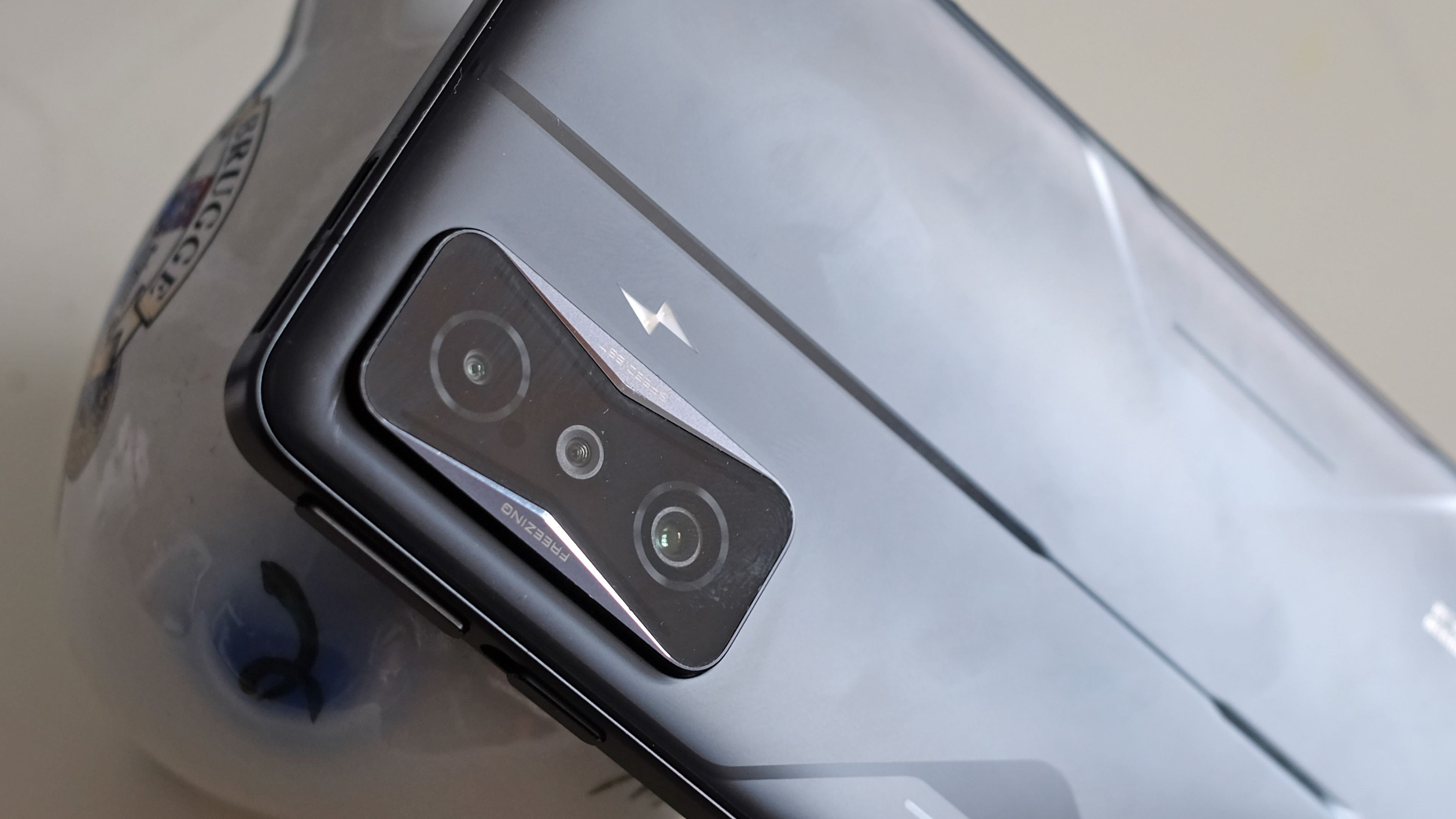
The Poco F4 GT’s display in high-end in all but one respect, resolution. This is a 2400 x 1080 pixel display, not the ultra-high-res kind you can get if you spend even more.
It may seem a big deal but it need not be. High-end games typically do not go above 1080p in their render resolution anyway. This is an OLED screen with super-rich colour that can be tamed if you’re sensitive to an oversaturated look. OLED, as always, delivers peerless contrast too.
One truly notable bit about the Poco F4 GT is something you can’t appreciate by eye, though. Its display glass is Gorilla Glass Victus, a flagship toughened glass you just don’t see in budget phones. It’s that bit more scratch and shatter resistant than Gorilla Glass 3 or 5.
You may notice in some of my photos there’s a big gash running across the display, but this a scratch in the factory-applied screen protector, not the display itself.
The Poco F4 GT’s brightness is great as well. After taking it outdoors with the less pricey Poco X4 GT, the F4 is clearly able — or at least calibrated to — go much brighter in direct sunlight. Xiaomi’s official figures are that it can reach 1300 nits peak, 800 in its high brightness mode, which is what you get outdoors in bright light.
Like most high-end phone screens these days the Poco F4 GT has a smooth-looking 120Hz refresh rate.
Poco F4 GT review: performance and battery life
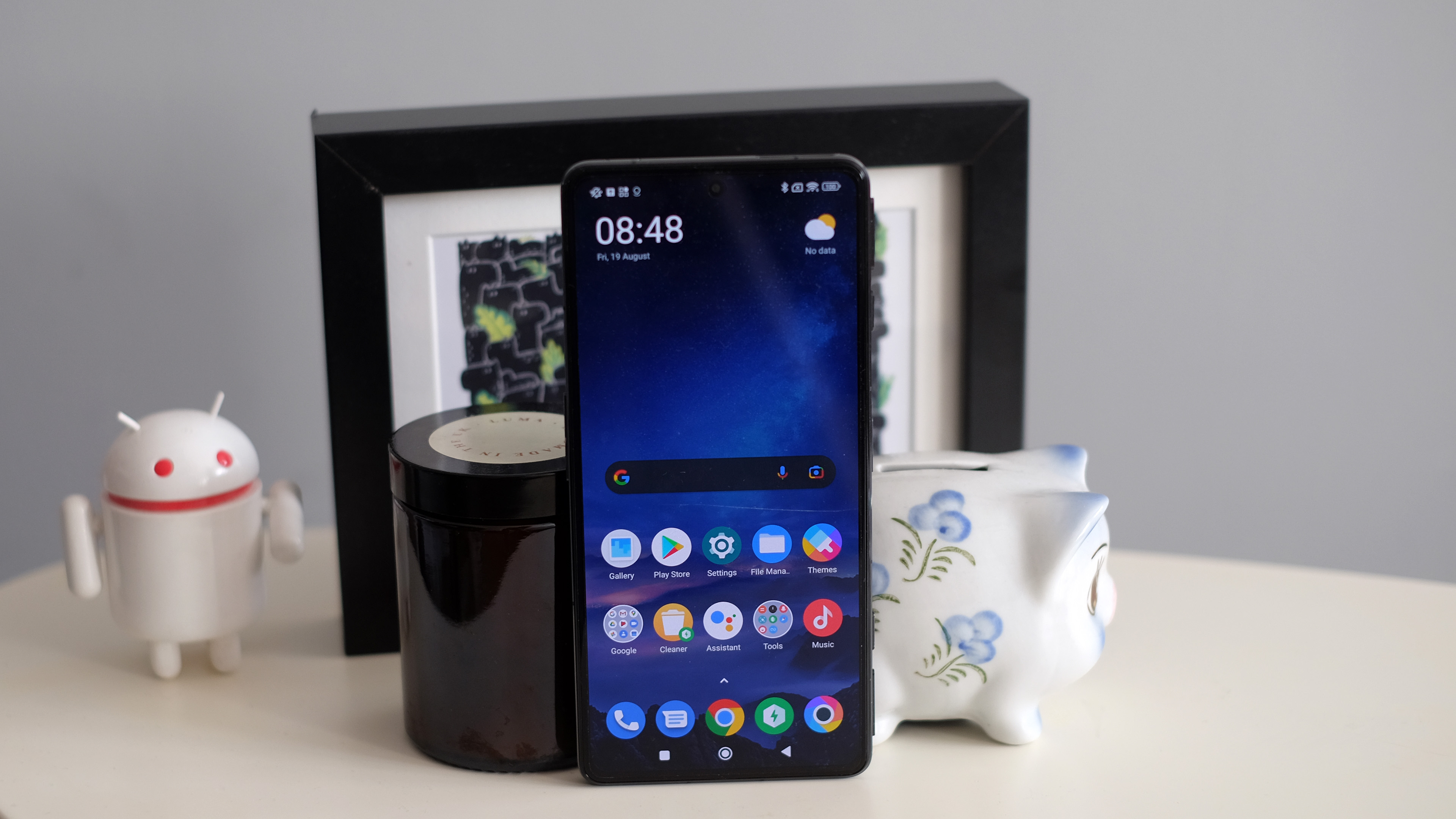
The Poco F4 GT runs Android 12 with Xiaomi’s MIUI pasted on top. These days MIUI is one of the more obtrusive interfaces, to the extent you’d barely be able to tell the difference whether the phone was running Android 11, 12 or 13.
However, I think there’s only one bit that might take you a while to bed into. Like all the recent Xiaomi and Poco phones, the Poco F4 GT messes with the gestures used in the drop-down menu, making you flick left and right to navigate between the feature toggles and notifications. This is a case of trying to “fix” something that wasn’t broken, and making it worse in the process. It’s particularly unhelpful when some drop-down widgets, like media playback, also use lateral navigation swipes.
The rest, though, is perfectly fine. You get the usual layout of an app drawer and home screens, and the Poco F4 GT makes it all feel nippy, responsive.
You’d hope as much given the Poco F4 GT has an extremely powerful Qualcomm Snapdragon 8 Gen 1 processor, 12GB of fast RAM and 256GB of storage that can rival some PCs’ SSD drives on pace. If they use older tech, anyway.
Few phone processors out there can beat the Poco F4 GT’s peak gaming performance. There’s the iPhone 13 family’s Apple A15 Bionic and the new “Plus” version of the Snapdragon 8 Gen 1. That’s it.
However, there are some issues. This phone gets hot a lot, and it doesn’t take gaming to make this happen. Downloads, multi-tasking and all sorts of everyday tasks see the Poco F4 GT get hotter, or at least warmer, than I’d like. And as I’ve seen in other phones with this SoC, heat-related throttling means the phone drops to around half of its peak performance after just a few minutes of real exertion.
Major throttling is the norm for Snapdragon 8 Gen 1 phones, but this phone’s worrying heat management is exactly what a gaming phone does not need. Still, it is of course powerful enough to coast through just about any game — although Fortnite does have some minor frame rate issues when maxed once the thermal throttling kicks in.
The Poco F4 GT’s battery life is also not as good as hoped. When a phone heats up regularly, there’s always a concern it is wasting resources, and there is an additional factor here. 4700mAh is not that high capacity a battery for a phone this large, this powerful, this focused on performance.
On most days I’ve had to give it an afternoon top up just to make sure it lasts the full day. The limited longevity is going to be particularly obvious if you use the Poco F4 GT as intended, gobbling up content and games more than the average person.
Super-fast charging is the counter. This phone has the highest-power charging tech available at the price, 120W. And while Xiaomi has already developed a 200W system, this one is much more punchy than the charging of just about all laptops bar powerful gaming ones.
It takes 9 minutes to reach 50% charge, 24 minutes to reach 100% and 30 minutes before the adapter stops drawing power. Impressive stuff, but the most impactful part here is you can plug in the Poco F4 GT for just a few minutes and see a big change in the charge level.
Poco F4 GT review: cameras
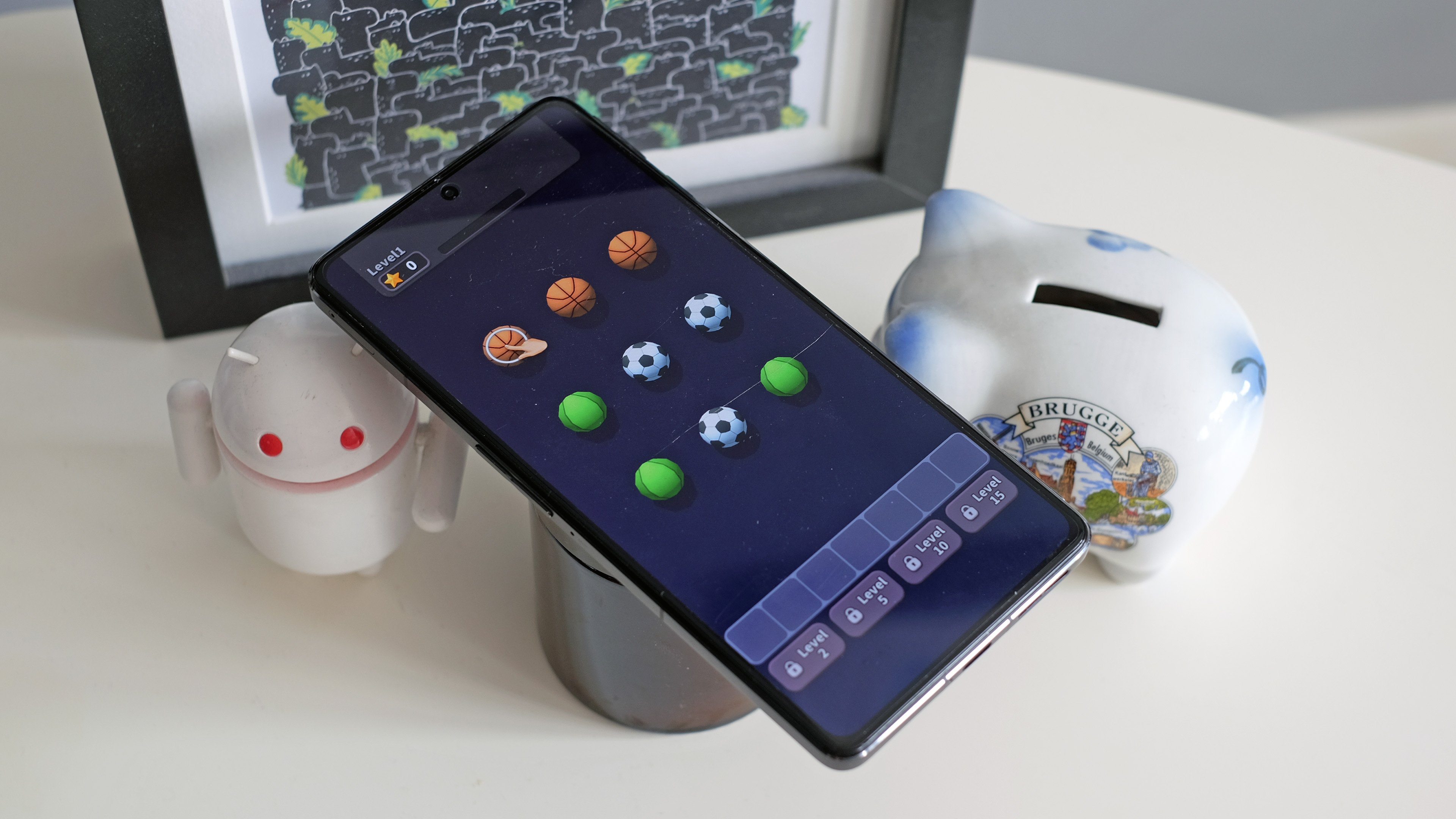
The camera is never the most important part of a Poco phone. It’s why this phone has a setup that can’t really compete with those of some models £200-300 cheaper.
You get a 64MP wide camera, an 8MP ultra-wide and a 2MP macro. Those secondary cameras are fairly naff for a phone that costs £700, and the very poor quality of the macro’s images means you can more-or-less think of the Poco F4 GT as a two-camera phone.
The Poco F4 GT also lacks the true high-quality main sensor and ultra-smart software of the best mid-range phone camera. That said, it does look pretty good on paper.
Xiaomi uses a Sony IMX696 in the primary camera, a large 1/1.73-inch chip. It takes 16MP photos as standard, using the now ultra-familiar pixel binning technique.
Day-time shots usually look bright and vibrant, and the actual feel of shooting images is good — snappy and responsive. However, look close at the resulting pictures and you’ll see enough quirks to make the Poco F4 GT a fairly mediocre photography tool at £700. Take a look at some sample shots taken on the phone below.






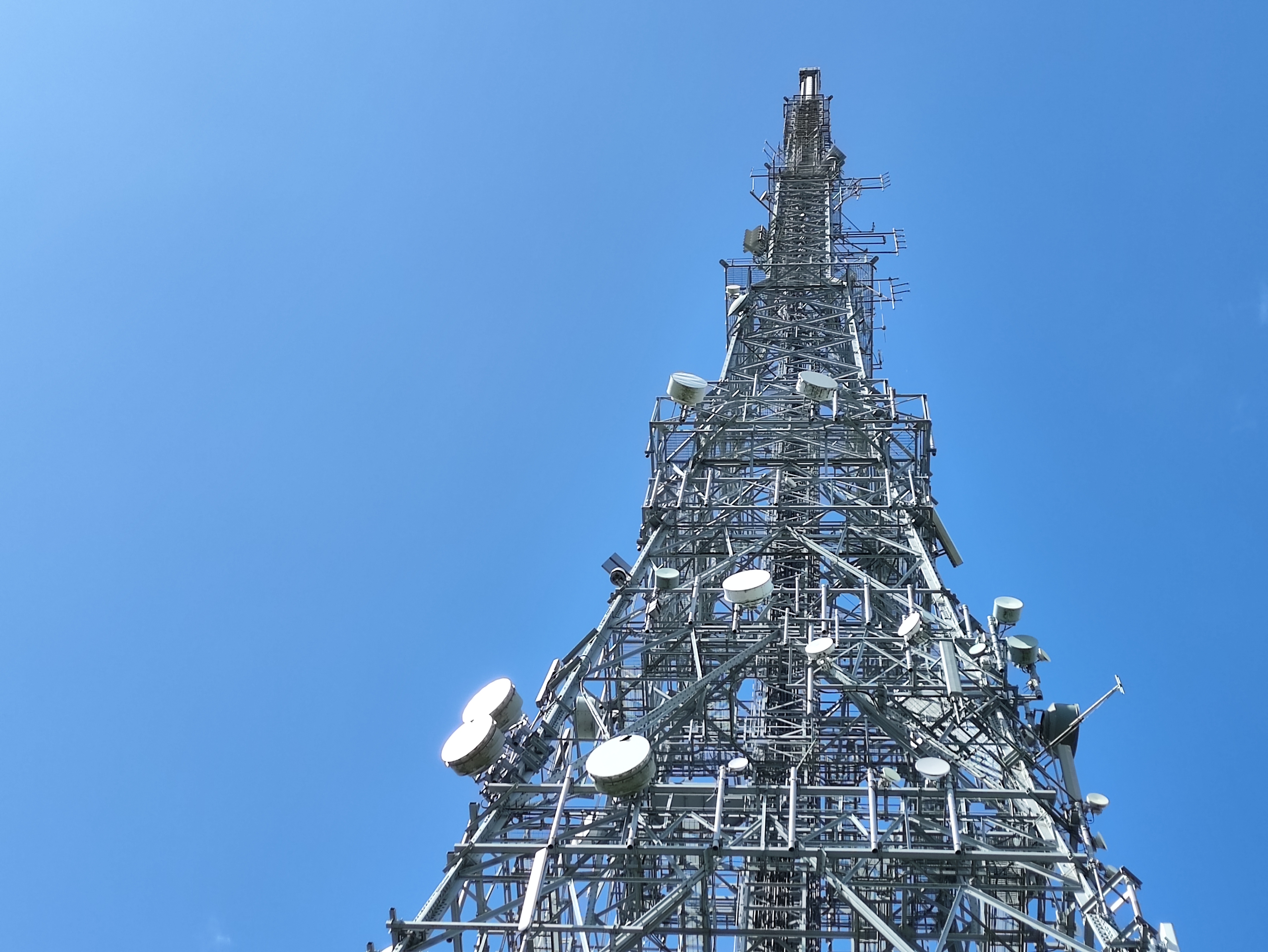








High-contrast edges sometimes exhibit purple fringing. The Auto HDR, while good, often leaves small overexposed areas throughout an image. Up-close the processing of natural textures doesn’t look entirely confident and coherent. And while the Poco F4 GT can take much better night-time images than the cheaper Poco X4 GT, fine detail still looks dithered and scrappy, and the dedicated Night mode doesn’t lift anywhere near as much detail out of the shadows as the best mid-range performers.
The lack of OIS also makes it fairly easy to capture blurred images indoors or in dull lighting if you’re not particularly careful about keeping your hands still. I could happily use the Poco F4 GT as my everyday camera, but it is beaten by some £400 phones, let alone £700 ones.
The use of truly top-tier processing hardware massively helps out the Poco F4 GT’s video side, though. It can shoot video at up to 4K resolution, 60 frames per second, and every single one of its core shooting modes uses EIS, electronic image stabilisation.
In a lot of cheaper mid-range models, there’s typically a 4K/30 cap. And that top mode is often completely unstabilised, making it pretty useless for casual video shooting.
The front camera is good too. It uses a 20MP sensor, one far better than either the ultra-wide or macro on the back. In good lighting the Poco F4 GT captures a lot of fine facial detail in selfies, and the Auto HDR mode makes light work of backlit scenes.
Poco F4 GT review: verdict

The Poco F4 GT is a gaming phone that costs significantly less than the no-holds-barred Androids from hardcore series like Asus’s RoG. It goes beyond the traditional Poco formula of just slotting in an above average processor and keeping the price low, most notably through its nifty pop-up magnetic trigger buttons.
However, after using the Poco F4 GT for a few weeks its shortcomings start to throw significant shade on the bespoke features. The phone gets quite hot a lot, and while its peak performance is brilliant, thermal throttling means its real-world performance isn’t dramatically better than a less gaming-focused mobile. Battery life is too short for comfort and the camera is, unsurprisingly, nothing to crow about considering some of the competition available.
Like just about all Poco phones, the Poco F4 GT represents decent value for its spec and build, but is ultimately harder to recommend than some of the series’s cheaper models.
Poco F4 GT review: also consider
The Poco X4 GT sits further down the line-up, and costs around half the price. It has an excellent MediaTek Dimensity SoC that doesn’t perform all that differently in most games, and the battery outlasts the F4 GT’s.
You lose all the fancy bits, of course. Its shell is plastic, the camera hardware slightly lower-end and there are no interesting hardware extras like the F4 GT’s magnetic gaming buttons.
If you’re not fussed about saving money, the Pixel 6 Pro makes a surprisingly good rival. It has better cameras, and while its Google Tensor SoC doesn’t match the Poco F4 GT’s for peak performance, it also throttles less during gaming. The Pixel 6 Pro also has a higher-resolution screen.
We can’t not mention the kind of phones the Poco F4 GT is effectively a cheaper alternative to, like the Asus RoG Phone 6. It costs hundreds of pounds more, but but pulls off the “dedicated gaming phone” idea better. The CPU is tweaked “Plus” version of the Poco’s processor, and suffers from less thermal throttling. Asus even offers a cooling accessory to improve results further.
Its battery is much larger too, at 6000mAh. As the phone is made to a much higher budget, the Asus also has superior cameras.
Sign up to the T3 newsletter for smarter living straight to your inbox
Get all the latest news, reviews, deals and buying guides on gorgeous tech, home and active products from the T3 experts

Andrew is a freelance tech and entertainment journalist. He writes for T3, Wired, Forbes, The Guardian, The Standard, TrustedReviews and Shortlist, among others.
Laptop and computing content is his specialism at T3, but he also regularly covers fitness tech, audio and mobile devices.
He began writing about tech full time in 2008, back when the Nintendo Wii was riding high and smartphones were still new.
-
 New Orient Star watches offer a glimpse of the magic within
New Orient Star watches offer a glimpse of the magic withinThere are two new skeleton pieces
By Sam Cross Published
-
 Netflix's most surprising 100%-rated sci-fi series returns with gorgeous trailer
Netflix's most surprising 100%-rated sci-fi series returns with gorgeous trailerLove Death + Robots is back for more
By Max Freeman-Mills Published
-
 Warning: Ciele’s refreshed Elite Collection may cause excessive garment envy on race day
Warning: Ciele’s refreshed Elite Collection may cause excessive garment envy on race dayFlex on your run crew with Ciele’s latest drop
By Matt Kollat Published